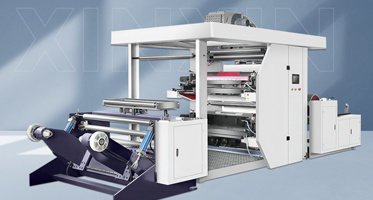21
2024
-
12
The Advantages of Ceramic Anilox Rollers Over Steel Rollers: A Comprehensive Guide for the Printing Industry
Author:
The Advantages of Ceramic Anilox Rollers Over Steel Rollers
In the competitive landscape of the printing industry, the choice of anilox rollers can significantly impact print quality, efficiency, and overall operational costs. Among the options available, ceramic anilox rollers have emerged as a superior choice over their steel counterparts. In this article, we delve into the myriad advantages of ceramic anilox rollers, providing a detailed comparison that highlights why they are becoming the preferred choice for many printing businesses.
Table of Contents
- Introduction to Anilox Rollers
- What Are Ceramic Anilox Rollers?
- Benefits of Ceramic Anilox Rollers
- Superior Print Quality
- Enhanced Durability
- Cost Efficiency
- Low Maintenance Requirements
- Reduced Environmental Impact
- Comparison with Steel Rollers
- Industry Applications of Ceramic Anilox Rollers
- Guidelines for Selecting Anilox Rollers
- Frequently Asked Questions (FAQs)
- Conclusion
Introduction to Anilox Rollers
Anilox rollers are essential components in the flexographic printing process, responsible for transferring a precise amount of ink onto the printing plate. The roller's surface is engraved with cells that hold ink, which is then transferred to the substrate during the printing process. The choice between ceramic and steel anilox rollers can make a significant difference in the final output quality and production costs.
What Are Ceramic Anilox Rollers?
Ceramic anilox rollers are made from a ceramic material that has been engineered to provide optimal ink transfer and durability. Unlike traditional steel rollers, ceramic rollers feature a hard, smooth surface that is highly resistant to wear and tear, making them an attractive option for businesses looking to improve their printing processes.
Benefits of Ceramic Anilox Rollers
Choosing ceramic anilox rollers brings a host of benefits that can revolutionize printing operations.
Superior Print Quality
Ceramic anilox rollers allow for greater precision in ink transfer, which results in sharper, more consistent print quality. The finely etched cells on the ceramic surface can hold a more uniform ink volume, reducing variations in color intensity and providing a smoother finish on various substrates.
Enhanced Durability
One of the standout features of ceramic anilox rollers is their durability. The hardened ceramic surface is much less susceptible to scratching and damage compared to steel rollers. This longevity translates into fewer replacements and less downtime, ensuring a more efficient production process.
Cost Efficiency
While ceramic anilox rollers may have a higher initial cost, their long-term savings are undeniable. Their durability leads to less frequent replacements, and the improved ink transfer efficiency reduces waste and minimizes ink costs. Over time, businesses can see significant savings in operational expenses.
Low Maintenance Requirements
Ceramic rollers require less maintenance than steel rollers due to their resistance to corrosion and wear. This attribute not only saves time but also reduces the need for costly maintenance practices, making ceramic rollers a practical choice for busy printing environments.
Reduced Environmental Impact
The enhanced efficiency of ceramic anilox rollers contributes to a lower environmental footprint. By utilizing ink more effectively, these rollers help decrease waste and reduce the number of chemicals released into the environment. This aligns with the growing trend of sustainable printing practices.
Comparison with Steel Rollers
When comparing ceramic anilox rollers to steel rollers, the differences in performance and lifespan are stark. Steel rollers, while traditionally used in the industry, often fall short in terms of print quality and durability.
- Print Quality: Steel rollers can cause variations in print quality due to wear and degradation over time.
- Durability: Steel rollers are prone to scratches and corrosion, leading to more frequent replacements.
- Cost: Steel may appear cheaper initially, but the long-term costs of replacements and maintenance can add up significantly.
- Maintenance: Steel requires regular maintenance to prevent damage, while ceramic rollers are much more resilient.
- Environmental Considerations: Ceramic rollers offer a sustainable option with reduced chemical waste.
Industry Applications of Ceramic Anilox Rollers
Ceramic anilox rollers find applications across various sectors, including:
- Packaging: Ideal for flexible packaging and labels due to their ink transfer precision.
- Publishing: Used in high-quality printing for magazines and books where color accuracy is paramount.
- Textiles: Employed in textile printing to achieve vibrant colors and patterns.
- Specialty Inks: Suitable for printing with specialty inks that require unique handling.
Guidelines for Selecting Anilox Rollers
When selecting the right anilox rollers for your printing needs, consider the following factors:
- Application: Identify the specific requirements of your printing application.
- Ink Type: Ensure compatibility with the inks you plan to use.
- Cell Shape and Size: Choose the appropriate cell geometry for optimal ink transfer.
- Durability Needs: Evaluate how frequently you will need to replace the rollers based on your production volume.
Frequently Asked Questions (FAQs)
1. What is the lifespan of ceramic anilox rollers compared to steel rollers?
Ceramic anilox rollers generally have a significantly longer lifespan than steel rollers due to their resistance to wear and scratching. Many users report lifespans that are several times longer than steel alternatives.
2. Are ceramic anilox rollers more expensive than steel rollers?
Yes, the initial cost of ceramic anilox rollers tends to be higher; however, the long-term savings in maintenance and replacement costs make them a more cost-effective choice over time.
3. Can ceramic anilox rollers be used with all types of inks?
Ceramic rollers are compatible with a wide range of inks, including water-based, solvent-based, and UV inks. It's essential to consult with the manufacturer to ensure compatibility with specific ink types.
4. How do I maintain ceramic anilox rollers?
Ceramic rollers require very minimal maintenance. Regular cleaning with appropriate cleaning solutions will help maintain their performance. Avoid abrasive cleaners that could damage the surface.
5. What are the environmental benefits of using ceramic anilox rollers?
Ceramic anilox rollers reduce ink waste and chemical usage, contributing to a lower environmental impact. This aligns with the industry's move towards more sustainable practices.
Conclusion
In conclusion, ceramic anilox rollers present numerous advantages over traditional steel rollers, including superior print quality, enhanced durability, cost efficiency, and reduced maintenance requirements. With an increasing emphasis on sustainability within the printing industry, the benefits of ceramic anilox rollers are not only compelling but also align with contemporary ecological considerations. As more businesses recognize these advantages, the transition to ceramic rollers is likely to continue, promoting a future of higher-quality, more efficient printing solutions.
Related news
MESSAGE

Mobile website
Contact Us
Contacts:Alen Zhao
WeChat/Whatsapp:+ 86 18857712033
Mobile:+86 18857712033
E-mail:sales@xinxin-flexo.com
Add:No. 511, Development Zone Avenue, Ruian Economic Development Zone, Wenzhou City, Zhejiang Province, China
Fax:+86-577-65160712














